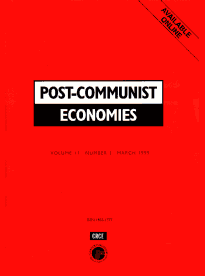
Central and Eastern European Countries in the Global Financial Crisis: A Typical Twin Crisis?
This paper shows that during the Great Recession, banking and currency crises occurred simultaneously in Central and Eastern Europe. Events, however, differed widely from what happened during the Asian crisis that usually serves as the model case for the concept of twin crises. We look at three elements that help explaining the nature of events in Central and Eastern Europe: the problem of currency mismatches, the relation between currency and banking crises, and the importance of multinational banks for financial stability. It is shown that theoretical considerations concerning internal capital markets of multinational banks help understand what happened on capital markets and in the financial sector of the region. We discuss opposing effects of multinational banking on financial stability and find that institutional differences are the key to understand differing effects of the global financial crisis. In particular, we argue that it matters if international activities are organized by subsidiaries or by cross-border financial services, how large the share of foreign currency-denominated credit is and whether the exchange rate is fixed or flexible. Based on these three criteria we give an explanation why the pattern of the crisis in the Baltic States differed markedly from that in Poland and the Czech Republic, the two largest countries of the region.




